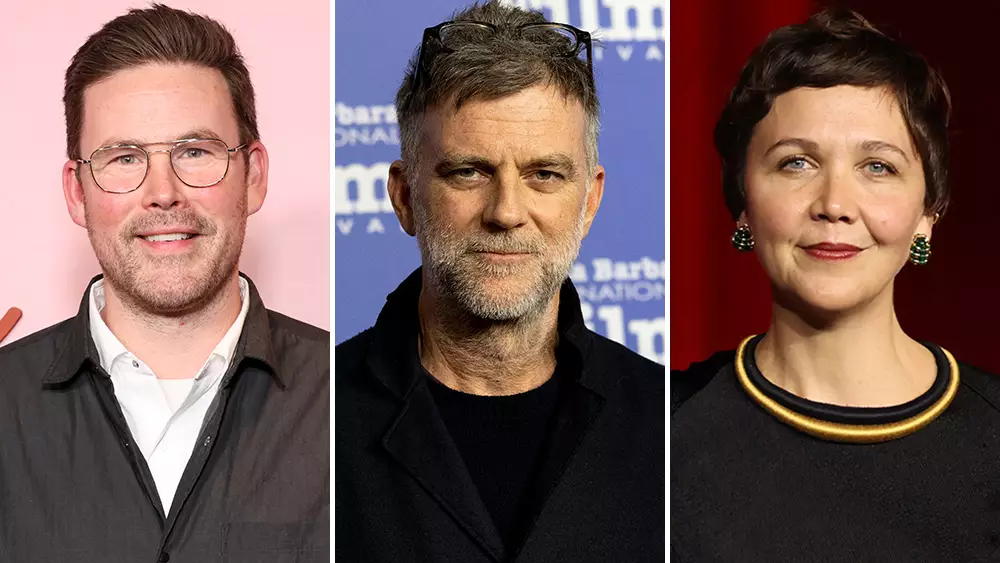In a decisive move that underscores Warner Bros.’ strategy to regain its footing in an ever-competitive cinematic landscape, the studio has executed a series of release-date adjustments that display both foresight and intent. With the winds of CinemaCon blowing, these changes are not merely tactical; they send ripples of anticipation through the industry, reflecting a keen awareness of audience demand and an inclination to secure financial viability.
With the films scheduled for release this year featuring a surprising number of auteur-driven titles, Warner Bros.’ gambit seems designed to shift its fortunes dramatically. The release of high-profile movies has faced its share of hurdles lately, evident in the underwhelming performance of Bong Joon Ho’s “Mickey 17.” This raises the stakes not only for Warner Bros. but for all studios navigating an increasingly volatile market. By recalibrating its lineup, Warners aims to channel momentum instead of merely reacting to crises.
Weaponizing Scheduling: The August 8 Blockbuster
One of the standout changes on the slate is the rescheduling of Zach Cregger’s much-anticipated genre film “Weapons,” now set to launch on August 8. Originally lined up for a 2026 MLK weekend release, this strategic repositioning allows Warner Bros. to leverage IMAX screens, a priority that ultimately dictated the schedule’s fluidity. Cregger, riding high on the success of his previous endeavor “Barbarian,” now pits his work against Disney’s “Freakier Friday,” a charming risk but a calculated one, considering the target demographics.
The excitement surrounding “Weapons,” starring heavyweights like Josh Brolin and Julia Garner, highlights an evolving cinematic landscape where genre films are increasingly being positioned as tentpole contenders. This shift shouldn’t be underestimated because it represents a willingness to challenge conventional filmmaking metrics, positioning horror and thriller genres next to mainstream comedies.
Paul Thomas Anderson’s Spiritual Journey
Moving Paul Thomas Anderson’s “One Battle After Another” from its initial August 8 slot to September 26 is another bold recalibration. This film, touted as Anderson’s most expensive venture yet, boasts an impressive cast that includes Leonardo DiCaprio. Interestingly, this new date not only offers Warner access to potential IMAX venues but also taps into the allure of 70mm presentations—an art form that holds undeniable appeal for cinephiles.
One cannot help but wonder whether Anderson’s work will follow the established narrative of festival launches. Although the director is known for his nuanced storytelling, his reluctance to adhere strictly to festival circuits could present both challenges and opportunities. The competition from Lionsgate’s “Saw XI” and Universal’s “Gabby’s Dollhouse: The Movie” on the new release date will surely be intriguing, but Anderson’s distinctive approach might set him apart if the film is adequately positioned.
Securing the Future with Animated Titles
Warner Bros. is also optimizing its family-friendly offerings, repositioning “The Cat in the Hat” to February 27, 2026, just a week ahead of Disney/Pixar’s “Hoppers.” This savvy move capitalizes on promotional prospects, allowing the film to shine alongside iconic franchises. Featuring a voice cast including popular names like Bill Hader and Quinta Brunson, this film appears to be a strategic decision aimed at attracting the family demographic, which has traditionally driven box office success.
With “Scream 7” also aiming for release around the same time, competitiveness in the family and horror genre markets is likely to spur innovative marketing approaches. Warner Bros. is clearly betting on the popularity of animated features while recognizing the importance of strategically timed launches.
A New Landscape for Summer Releases
Shifting “Flowervale Street” to August 14, 2026, positions Warner Bros. to capitalize on the summer blockbuster season, a time often dominated by high-action and low-brow entertainment. It will stand out as one of the few major studio releases during that period, allowing the film a stronger competitive edge against others inundating multiplexes.
The release calendar, now brimming with potential, demonstrates Warner Bros.’ commitment to addressing past missteps and reorienting its strategy. The decision to adapt timely, even amidst uncertainty, speaks volumes about the studio’s priorities and ambitions. This evolving landscape—where IMAX screenings, auteur narratives, and family-friendly content coalesce—may ultimately define an era of cinematic storytelling capable of thrilling audiences and investors alike.

